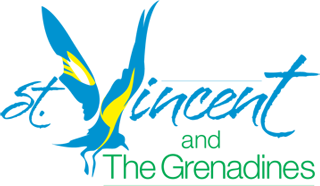Alexander Anderson

Alexander Anderson was born in Aberdeen, Scotland, and studied for a period at the university in Edinburgh although he did not complete the work for a degree. He was employed briefly at the Chelsea Physic Garden by a fellow native of Aberdeen, William Forsyth, at that time head gardener at the Physic Garden and later at St. James’s and Kensington Palace Gardens. In 1774
Anderson went to New York to seek employment as a gardener, taking up residence with his brother John, a printer. During this period he sent botanical specimens and seeds from Long Island and York Island (now Manhattan) to Forsyth. At the same time he listed other plants he could send and asked for plants from England in exchange.
Being a loyalist, Anderson sailed for Surinam when the American revolution began, rather than be pressed into military service. By 1783 he was on St. Lucia, employed as an orderly in the military hospital then headed by Dr. Young. Young asked Anderson to search for local medicinal plants, particularly one that could provide qumine for treating malaria. One of the plants he found, called quma, or china, was sent to London for testing and was eventually described and named as Cinchona santaeluciae, a relative of C. officinalis, the source of quinine, but although it tasted as bitter as quimne, it did not contain the cmchona alkaloids and was eventually placed in the genus Exostoma.
Anderson also traveled to other British-held islands, with Dr. Young or at his direction, and accompanied Young on his return to St. Vincent in 1784. When Anderson became the first person known to climb the Soufriere of St. Vincent (at 4,048 feet, the highest peak on the island), Young realized that he was not only an experienced naturalist but an active field man as well and recommended
him as his successor in the superintendency of the garden.
Along with the formal notice of his appointment by Sir Joseph Banks and the War Department in 1785, Anderson received orders to submit a list of the plants then growing in the Botanic Garden and to report new introductions or other developments at quarterly intervals, which he did, but if they were preserved, few have been located. In A Catalogue of Plants in His Majesty’s Garden on the Island of St. Vincent, dated June 1, 1785, and now preserved in the British Museum (Natural History), Anderson listed at least 348 different kinds of plants, his heritage from Young, including all 31 plants of economic importance mentioned by Ellis in his 1773 publication. The top portions of several pages of the manuscript were charred in the World War II bombing of London, but it appears that Anderson categorized the plants as commercial, medicmal, esculent, ornamental, or timber species. He is not known to have made subsequent reports until around 1800, when he compiled a manuscript entitled Hortus St. Vincentii, which describes the plants then found in the garden. Each of its nearly 2,000 taxa is identified not only by its Latin, English, and French names, but also, where possible, by its Carib and "Negroe" names, showmg that Anderson had fulfilled General Melville’s instructions to Dr. Young by seeking out native plants. Each taxon is also given a description, along with data on propagation and culture as well as uses and sources of the plants.
Anderson was a prolific letter-writer, with virtually a worldwide network of correspondents. Most extant correspondence was with
William Forsyth, but there are also letters to an assortment of others in England as well as in the United States, where his most important contact was William Hamilton of the Woodlands in Philadelphia. Hamilton provided Anderson with many plants of the eastern United States for trial in St. Vincent and helped him establish exchanges as far away as Calcutta. Anderson also had correspondents in the French islands of the Caribbean as well as in Jamaica, the Bahamas, and Barbados, where his closest contact
was Governor Lord Seaforth (1801-1806). He regularly sent plants to Seaforth for transshipment to England, with the result that the introduction into Europe of many plants that Anderson had obtained in the wild are credited instead to Lord Seaforth.



